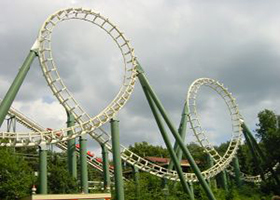


That’s according to an article recently published in The Wall Street Journal that looks at the behaviour of ETFs on Aug. 24, the day the S&P 500 plunged 3.9%—the first official correction since May 2011.
According to the article, many ETFs were trading at sharp discounts relative to their holdings in the first moments of trading on Aug. 24. That meant investors who panicked and sold would have experienced outsized losses. While the poor performance of some ETFs was likely an anomaly due to a highly stressed out market, it does raise questions for ETF providers and investors alike.
The Journal points to one of the dozens of ETFs hit by the volatility—the iShares Select Dividend ETF—which tumbled 35% at 9:42 am on Aug. 24 while the combined weighted values of the underlying stocks had only fallen 2.7% for the day. According to iShares’ Mark Weidman, the problem was fixed within “303 seconds”—so the anomaly was short-lived.
As the article points out, the performance glitch was largely due to trading halts in some of the underlying stocks—this disrupted the arbitrage activity that normally allows market makers to buy and sell the underlying stocks in an ETF and maintain liquidity and price.
Price discrepancies were corrected relatively quickly so the glitch didn’t have a lasting effect on the product. But the performance of some ETFs on Aug. 24 should be of interest to ETF investors, particularly as the industry continues to grow exponentially. Investors have poured billions of dollars into ETFs they expect to perform the same way, day in and day out.
The thing is, intense volatility affects the entire market—and when market stress hits, there are few pockets that can be immune, even ETFs. Providers are taking a close look at this anomaly and will no doubt look to fix it as fast as they can. But the question remains: how much can we reasonably expect of any investment product during times of extreme market stress—and do investors really understand how specific products are designed to deal with it?
